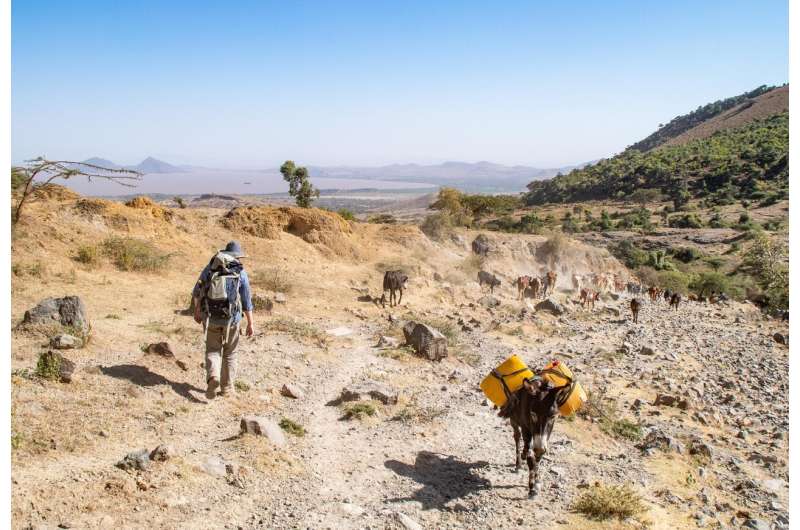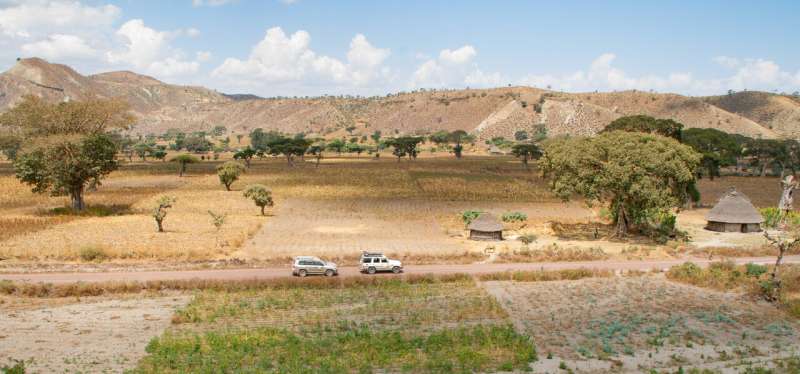Rare volcanic rocks lift lid on dangers of little-studied eruptions

Unusual rocks discovered on a remote mountainside have alerted scientists to the dangers posed by a little-studied type of volcano.
Researchers say that the rocks, found in East Africa, provide vital clues into the hazards associated with active volcanoes elsewhere.
The volcanic remnants from Aluto in Ethiopia were formed by intense eruptions that could be far more dangerous than previously thought, researchers say.
Their findings provide fresh insight into the hazards posed by a type of volcanic activity—known as a pumice cone eruption—which, until now, was poorly understood.
Previous studies had suggested the eruptions—which last took place on Aluto more than 2,000 years ago—were quite small and presented a low risk to all but those living very near them.
Researchers from the University of Edinburgh used a range of precise techniques to analyse the rocks and better understand the eruptions that formed them. Their findings could build a clearer picture of the risks posed by these rare volcanoes, which are among the most common types found in East Africa. Others are found in Iceland and on Mayor Island, New Zealand.
The rocks are composed of a thin layer of volcanic glass surrounding a porous, foam-like interior. This structure reveals that the rocks were still hot and sticky when they hit the ground, researchers say.

These small, ultra-light rocks were found a long way from the volcano, suggesting they were carried in a hot jet of volcanic material—known as an eruption column—and fell from the sky.
Eruption columns are formed only during powerful eruptions, and collapse to form fast-moving avalanches of super-heated rock, ash and gas, researchers say.
The study, published in Nature Communications, was funded by the Natural Environment Research Council. The work involved researchers from Addis Ababa and Wollega Universities in Ethiopia. It forms part of the collaborative RiftVolc project between UK and Ethiopian universities.
Ph.D. student Ben Clarke, of the University of Edinburgh's School of GeoSciences, who led the study, said: "Many people live on and around these volcanoes, which also host valuable geothermal power infrastructure. Our work suggests that future eruptions at these volcanoes have the potential to cause significant harm, further from the volcano than we previously thought. Continued interdisciplinary research to understand and manage this risk is required to safeguard people and infrastructure in Ethiopia."
More information: Ben Clarke et al. Fluidal pyroclasts reveal the intensity of peralkaline rhyolite pumice cone eruptions, Nature Communications (2019). DOI: 10.1038/s41467-019-09947-8
Journal information: Nature Communications
Provided by University of Edinburgh





















